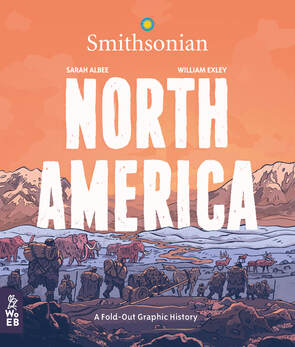|
More magic unexpectedly happened in my classroom during writing this week. Of course, all magic is unexpected. If the outcome were expected, it wouldn’t be magical. Instead, the occurrence would be structured and planned. One day I asked students to write about something that is hard for them. They brainstormed a list and chose one item to write about. At the end of the period, students shared out. One student wrote about how math was hard for her. She shared that she often didn’t understand it the first time the teacher introduced the concept, she didn’t finish it as quickly as the other students around her, and she often had to ask for help. The shaka sign shook the rug. Another student wrote that writing was hard for him. He shared that he often didn’t know what to write about, when he did write it was hard to decipher his handwriting, and he had a hard time writing more than a sentence or two. Once again the shaka sign upped the energy level in the room. The gift he gave me was when he shared that in fourth grade writing wasn’t as hard because he actually understood the point of it. I should have asked him what the point of it was, but recess was looming. I’ll have to follow up on that, not just because it might fill my bucket but because it might give me a window into what I need to replicate in future lessons. Anyway, it led me to thinking about what is hard for me. As a teacher, it’s hard to give up the structure of a five-paragraph persuasive essay. In the past when I’ve taught my students how to write a persuasive essay, they’ve all walked away with a beautifully structured paper. Since I’m following the lessons from Lucy Calkins’ Boxes and Bullets: Personal and Persuasive Essays, I’ve taken huge steps away from that structure. Perhaps the creators of the program would protest saying the structure is there, and they’re right. But it’s not the central focus. I have no idea what my students’ final products will look like, or if they’ll even have a final product. Later in the week, students expanded their writing by looking at a list of questions Calkins gives the students. The list included questions such as, “What is the feeling in this piece of writing?” and “What did your writing make you realize?” I presented the mini-lesson and then began conferencing with students. More Magic. One student looked back at a piece he had written about flushing his fish down the toilet. He said the feeling in the piece of writing was sadness. I replied that while I understood why he felt sad, that I didn’t feel his sadness in his writing. I asked him what sadness felt like for him and he replied, “My heart pounds, my stomach growls and tears run down my cheeks.” Needless to say when he added that description into his writing, it was much more powerful than it had been before. The other student looked back at a piece he had written about playing goalie and letting a goal score. He said he realized that he was too hard on himself. I followed up by asking, “In the soccer game?” and he responded in every area of his life. He expanded and said that no one could have stopped that goal. So, why was he expecting himself to do something impossible? Wow! If only I had that realization as a nine-year-old, I can’t imagine how my life would be different as would the life of my family members and students. As a writer, it’s hard for me to give up structure, too. After all, honing structure has been a very successful exercise for me. Books can’t get more structured than my first book 100 Bugs! A Counting Book. The rhyme is structured, the narrative arc is a ladder structure, and the subject matter, combinations of ten, has an inherent structure. But it’s not just once that structure has saved me. This summer I revised and honed two picture book manuscripts with a certain strategy. You guessed it… by improving the structure. In one manuscript, Chicks Rule Dogs Drool, the structure was too repetitive. Sarah Albee, a phenomenal writer who has released yet another amazing book North America: A Fold-out Graphic History, suggested I only use repetitive text every other spread. Of course there were other suggestions I followed as well, but that change greatly improved the story. In another manuscript, A Day at Home for Mickey McCafferty, a different critique group had many ideas about why the story wasn’t working. The version I brought to group had the main character interacting one-on-one with various family members throughout the day. Then in the climax, the whole family celebrated together. People said that they wanted to see the effect of the main character’s actions on each individual family member, not the family as a whole. Their comments made me think of A Sick Day for Amos McGee by Erin and Phillip Stead. In the first half of the exquisite book, A Sick Day for Amos McGee, Amos helps each animal individually. In the second half, each individual animal helps Amos. It’s a ladder structure. The readers see Amos interacting individually with each animal twice. I went back and used the same structure in A Day at Home for Mickey McCafferty and voila. What a difference. But as I’m learning in my classroom, structure isn’t always the answer and it’s only part of the picture. A writer I greatly admire, Rajani LaRocca, did me an incredible service and read the entire fourth draft of my middle grade novel manuscript, Origami Treasure. I had hoped she’d read it and say, “Send it out. It’s ready to go.” After all, that’s what my former agent and her assistant had said. Instead, Rajani did me a great favor and told me all the reasons why the novel was far from ready to submit. She had many criticisms, but to sum it up succinctly she said the novel was trying to do too many things. She’s right. The manuscript is trying to do too many things. One could argue that it means there are structural problems in the novel, but I don’t think that’s the real issue. What I’ve realized is that just like my student who wrote the flushing the fish down the toilet story, I need to hone in on the emotional resonance in my manuscript.
But the terrifying thing is, I don’t know how to do that. As far as I’m aware, honing in on emotional resonance isn’t something I can fix structurally, that would be the same as trying to plan magic. No, I’ll have to let go. I don’t know if the answer will come from my students, or on a run, or in the shower, or during my commute to work, or through another channel. One thing I do know is the answer will come on its own time, not when I plan on it coming. More magic.
0 Comments
Leave a Reply. |
Chalk + Ink ChatsWant to hang out with teachers who write and writers who teach? Fill this form to join our Archives
October 2023
Categories |









